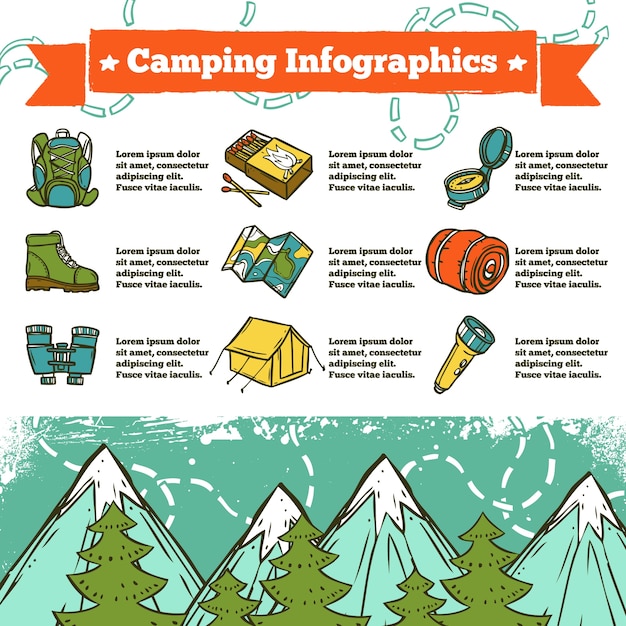If you camp consistently in areas with rocks or sharp downed branches or simply dislike storing a damp, muddy camping tent, after that an impact is definitely worth considering. Footprints are likewise fairly inexpensive compared to a new camping tent.
What is the meaning of Glampers?
Several camping tent producers offer their very own certain footprints, which are reduced to the precise dimension of the tent flooring. Nevertheless, you can make one yourself with a light-weight material like polycryo or tyvek.
Weather
Whether or not you require a footprint actually depends upon the conditions you'll be camping in. If you're backpacking in an area where the ground is normally wet (it's virtually inescapable), a tent impact can be a beneficial addition to your package, as it will stop your camping tent floor from coming to be soggy.
Nonetheless, if the footprint is too large it can serve as a moisture catch and potentially permit water to pool under your outdoor tents. This can be prevented by seeing to it the impact is cut a bit smaller than your camping tent on all sides.
Generally talking, it's best to obtain a footprint from the exact same manufacturer as your outdoor tents to ensure a specific fit. They also often tend to be made from thicker, more sturdy materials than do it yourself options. They can be costly for something whose sole function is to shield the ground beneath your outdoor tents, however it can be a rewarding investment if you appreciate the longevity of your gear.
Surface
Many top quality tents can work well without an impact, especially those that have actually bath tub floors constructed from durable materials. Nonetheless, the terrain you trek on can have a substantial effect on exactly how rapidly your outdoor tents floor wears. Granite pieces, sandstone and various other rugged surface areas wear through all-time low of your outdoor tents faster than verdant fields or forest floors.
An impact or ground cloth aids extend the life of your camping tent by working as a barrier between the ground and the sewn-in groundsheet of your outdoor tents, says REI senior sales specialist Elizabeth Nguyen. It likewise shields the tent from liveable tents rough components like sharp twigs and jagged rocks that might penetrate or tear the sewn-in flooring. When selecting a footprint for your camping tent, it is necessary to ensure it's somewhat smaller sized than the outdoor tents on all sides. This protects against water from pooling between the camping tent and impact during a rainstorm, which could leak right into your outdoor tents. The best option for a footprint is to buy one created for your certain outdoor tents, which will certainly guarantee a snug fit.
Tents with Lower Deniers and Water Resistant Ratings
Whether you're an informal backpacker or a hardcore adventurer, the longevity degree of your camping tent is a vital factor to consider. Tents created to be ultralight, verging on minimalist, typically compromise some level of toughness in the material and products made use of.
One textile specification you'll encounter is denier, which refers to the weight in grams of a 9,000-meter size of thread that comprises the camping tent's canopy, rainfly, and/or flooring. A greater denier specification signifies a lot more sturdy fabrics, while reduced numbers show lighter and much less resilient textiles.
Various other specs to check out include floor measurements, vestibule size, and interior pockets. The previous mirrors the total square-footage that can be used for habitable room, while the latter can contribute in storage by offering an area to stash gear over night and in bad climate. Ventilation is likewise a critical factor; as you exhale dampness throughout rest, it needs to leave, or condensation may develop within. Attributes such as mesh home windows and panels and flexible rainfly doors aid increase ventilation and avoid this from occurring.
The Price
The cost of a tent can impact its performance, and it is likewise essential to think about how much you can pay for to spend. Backpackers seeking a light-weight sanctuary needs to go for an outdoor tents with a livability ranking of a minimum of 2 stars, and if possible, three or even more.
Livability describes exactly how roomy a camping tent feels, with headroom and flooring measurements playing a huge role. Historically, backpacking tents made use of outstanding sloped walls and minimal space to save weight, but contemporary materials enable developers to give even more comfort while maintaining weight low.
Storage is one more element to take into consideration, with vestibules and a quick-pitching style helping in reducing arrangement time. Furthermore, the type of textile finish and just how the outdoor tents is saved can impact durability. For example, a PU coating that breaks down quicker when damp, or goes through duplicated cycles of storing and un-stowing, can significantly shorten the lifespan of a tent. Similarly, using a customized footprint rather than packing an outdoor tents in a slipshod fashion will likewise extend its life-span.
What size is a 4 man tent?
